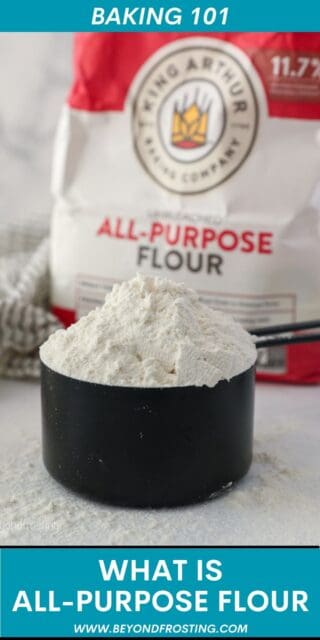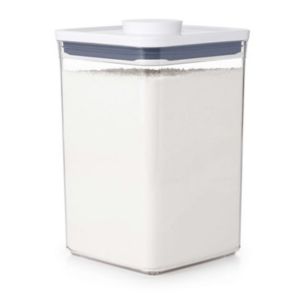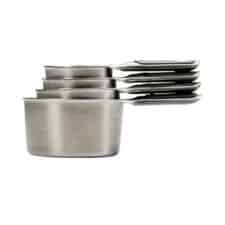All about all-purpose flour! This guide walks you through everything you want to know about all-purpose flour, including what it is, when to use it, and how to store it.
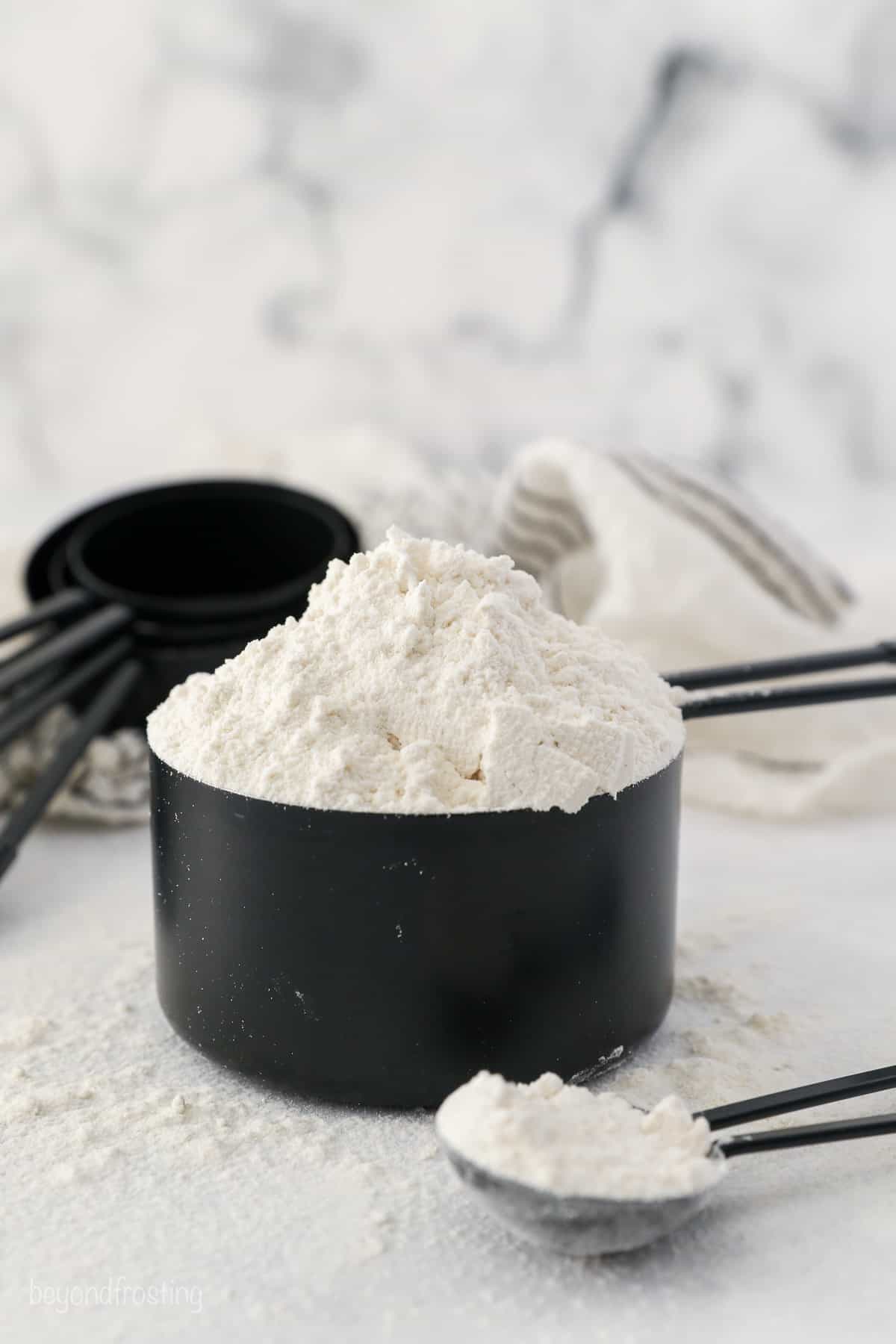
What Is All-Purpose Flour?
All-purpose is the most commonly used kind of flour, and you’ve likely already used it when baking! To better understand what all-purpose flour is exactly, though, it helps to have a more general understanding of wheat flour. Some strains of wheat are higher in protein, while some are lower in protein. The higher the protein, the stronger the flour.
“Hard” wheat, like the kind used for bread flour, is high-protein and higher in gluten as a result. This makes it ideal for chewy pizza dough recipes, crusty bread, and pasta-making. Meanwhile, “soft” low-protein wheat, like the kind in cake flour, is lower in gluten and more suitable for cakes and pastries. All in all, there are six different classes of wheat, many of which are milled and blended with other wheat to produce different strengths of flour.

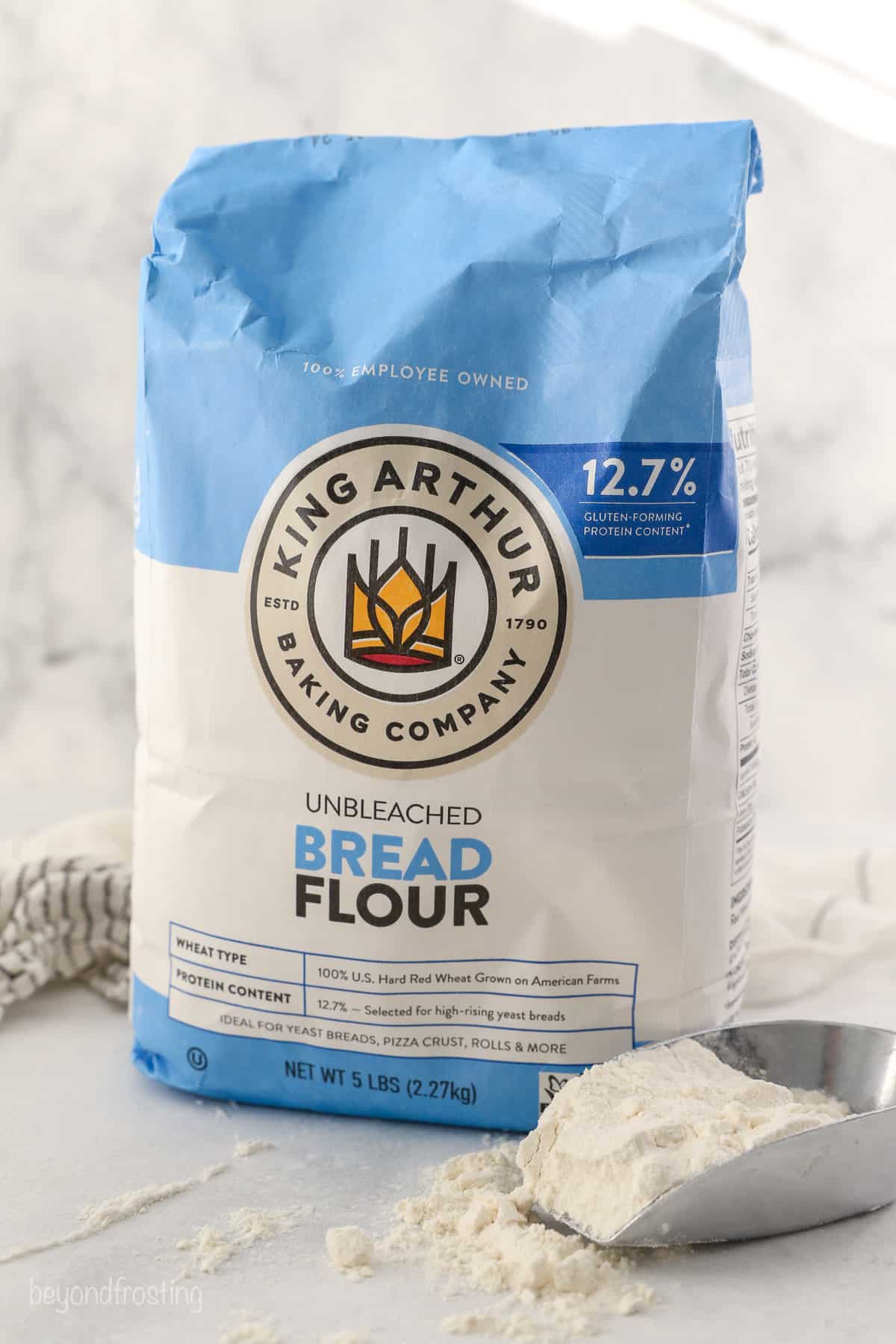
With all these many varieties of flour out there, what’s the average home baker to do? Enter: all-purpose flour! All-purpose flour (also called plain or white flour) was developed to cover all the bases. It’s a medium-strength blend of hard and soft wheat flour, which makes it suitable for most baking purposes, from moist chocolate cake to pound cake, and pancakes to chewy chocolate chip cookies, pizza dough, and bread recipes or cinnamon rolls.
How to Cook With All-Purpose Flour
In baking, all-purpose flour is combined with other ingredients such as eggs, sugar, fats, and leavening agents, like baking powder/soda and yeast. When mixed with liquid, the proteins in flour form gluten, giving baked goods structure and elasticity. It’s how bread and cake batters stretch and rise up nice and fluffy in the oven.
Meanwhile, recipes for soups, stews, and sauces will sometimes include flour as a thickener. In this case, it’s usually combined with butter or another fat to create what’s called a “roux”.
It’s important to measure your flour correctly when using it in recipes. The best way to do this is by weight (i.e. grams), as it yields a more accurate measurement than volume (i.e. cups). Many recipes call for flour by weight, and your baked goods are much more likely to turn out properly when you measure out your flour on a kitchen scale.
If you don’t have a kitchen scale, your next best bet is some quick conversions. In most cases, one cup of all-purpose flour weighs approximately 120 grams. However, this number varies slightly depending on the brand of flour you’re using. You can see why weighing flour is the first choice whenever possible!

Another handy trick is to use the nutrition label on your bag of flour to work out the conversion. Some labels will list the serving size in cups alongside the equivalent number of grams. For example, if a serving size is written as ¼ cup (30 grams), then one full cup (30 grams x 4) would be 120 grams. If your recipe calls for 240 grams of flour, you’ll need 2 cups, and vice versa.
You can download my handy Kitchen Conversion Chart and if you’re looking for more baking measurement conversions, here’s my essential reference list.
Is Self-Rising Flour the Same as All-Purpose?
While similar, self-rising flour and all-purpose flour are not the same thing. Self-rising flour is lower in protein, and it contains leavening agents like salt and baking powder (hence, “self-rising”). When using self-rising flour for things like biscuits, adjustments need to be made to the baking powder measurements so you don’t accidentally end up with too much leavening agents.
What Does It Taste Like?
You won’t often eat raw flour on its own (and you also shouldn’t, for safety reasons), and most recipes with flour get their flavor from the other ingredients along with the chemical reactions that caramelize the starches. By itself, flour is dry, powdery, and bland.
If the odd recipe does call for raw flour, like in the case of edible cookie dough, you’ll need to heat-treat flour first. Heat-treating flour destroys any unwanted bacteria and helps prevent foodborne illness.
All-Purpose Flour Substitute
In most baking recipes for cakes and cookies, cake flour cannot be used as a 1:1 substitute for all-purpose flour. The recipe usually requires some tweaking. In bread making, higher-protein whole-wheat flour or bread flour is the best substitute for all-purpose.
Where to Buy All-Purpose Flour
All-purpose flour is one of the most popular ingredients you’ll come by, and it’s sold in the baking aisle of just about every grocery store and supermarket. You can also find your favorite brands online, and have your flour delivered right to your doorstep!
How to Store Flour
Store your all-purpose flour airtight in a cool and dry location, like the pantry, for up to 8 months. Make sure that the package is tightly closed, to prevent insects and air from getting into the flour.
If you live somewhere that’s especially humid, you can seal the flour inside a large zip-top bag to keep in the fridge. Flour absorbs odors easily, however, so make sure that it’s kept away from onions and similar foods. To further extend the shelf life of your flour, you can keep it airtight in the freezer, too.
Check out my tutorials for more helpful tips and baking resources, from the different kinds of cocoa powder to the difference between baking soda and baking powder, and more!
This handy kitchen scale is my more used baking tool, and it’s inexpensive too! The digital scale is lightweight and takes up minimal space.
These 4.5 qt, airtight containers from OXO are ideal for storing of flour and sugar.
The set of four measuring cups have soft, comfortable, non-slip handles. The set includes 1/4 Cup, 1/3 Cup, 1/2 Cup, and 1 Cup Measuring Cups for dry ingredients.

